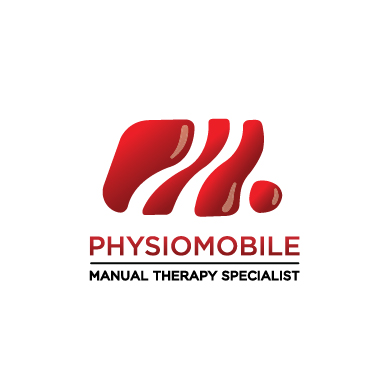Stroke is a hazardous condition that should not be taken lightly as it happens very suddenly and contributes to a high number of deaths. We will reveal the best stroke treatments patients can get in Malaysia.
Also, we will help you identify the symptoms and causes of this condition as well as the treatments needed so you can seek early treatment and save a life, or perhaps your own.
What is Stroke?
Stroke, or “brain attack” is a severe medical condition that occurs when the blood supply to part of the brain is interrupted.
When this happens, oxygen and nutrients transported to the brain tissues are reduced, which later causes the brain cells to die in minutes.
Patients with this life-threatening condition require early treatment to prevent brain damage and other high-risk complications from happening.
Some of the common symptoms of this condition are sudden numbness in the face, arm, or one side of the body, and sudden difficulty in speaking and understanding speech.
An individual with this condition will also experience trouble seeing, walking, dizziness, lack of coordination as well as sudden severe headache with no known cause.
Causes of Stroke
1. Smoking
Cigarette smoking causes a two-fold increase in the risk of ischemic stroke and up to a four-fold increase in hemorrhagic stroke risk.
It has been linked to the buildup of fatty substances (atherosclerosis) in the carotid artery, the main neck artery supplying blood to the brain.
Blockage of this artery is the leading cause of stroke in Americans.
The nicotine in cigarettes can no doubt raise your odds of a stroke as it increases your blood pressure.
Carbon monoxide from smoking reduces the amount of oxygen your blood can carry to the brain, and cigarette smoke makes your blood thicker and more likely to clot.
Smoking also promotes aneurysm formation. Your doctor can recommend programs and medications that may help you quit smoking.
By quitting, at any age, you also reduce your risk of lung disease, heart disease, and a number of cancers, including lung cancer.
2. Medications
Many people might not be aware that some medications can raise the risk of getting a stroke.
For instance, blood-thinning drugs, which are prescribed to prevent blood clots, can sometimes make a stroke more likely to happen through bleeding.
In addition, according to studies, hormone therapy used for menopause symptoms like hot flashes is linked to a higher risk of strokes.
The odds can also go up from the intake of low-dose estrogen in birth control pills.
3. Family
Strokes can run in families. If your relatives have a history of stroke, there is a tendency for you to get a high blood pressure or diabetes.
Genetic disorders that involve blood flow blockage to the brain can also contribute to this condition.
4. Hypertension
Hypertension is, by far, the most potent risk factor for stroke.
It causes a two-to four-fold increase in the risk of stroke before age 80.
If your blood pressure is high, you and your doctor need to work out an individual strategy to bring it down to the normal range.
Some ways that work:
- Maintain proper weight
- Avoid drugs
- Eat right: cut down on salt and eat fruits and vegetables to increase potassium in your diet.
- Exercise more. Your doctor may prescribe medicines that help lower blood pressure.
- Controlling blood pressure will also help you avoid heart disease, diabetes, and kidney failure.
5. Heart Disease
Common heart disorders such as coronary artery disease, valve defects, irregular heartbeat (atrial fibrillation), and enlargement of one of the heart’s chambers can result in blood clots that may break loose and block vessels in or leading to the brain.
Atrial fibrillation—which is more prevalent in older people—is responsible for one in four strokes after age 80, and is associated with higher mortality and disability.
The most common blood vessel disease is atherosclerosis.
Hypertension promotes atherosclerosis and causes mechanical damage to the walls of blood vessels.
Your doctor will treat your heart disease and prescribe medication, such as aspirin, to help prevent clots’ formation.
Your doctor may recommend surgery to clean out a clogged neck artery if you match a particular risk profile.
If you are over 50, NINDS scientists believe you and your doctor should decide on aspirin therapy.
A doctor can evaluate your risk factors and help you decide if you will benefit from aspirin or other blood-thinning therapy.
6. Warning Signs or history of TIA or stroke
If you experience a TIA, get help at once. If you’ve previously had a TIA or stroke, your risk of having a stroke is many times greater than someone who has never had one.
Many communities encourage those with stroke’s warning signs to dial 911 for emergency medical assistance.
If you have had a stroke in the past, it’s crucial to reduce your risk of a second stroke.
Your brain helps you recover from a stroke by asking the unaffected brain regions to do double duty. That means a second stroke can be twice as bad.
7. Diabetes
In terms of stroke and cardiovascular disease, having diabetes is the equivalent of ageing 15 years.
You may think this disorder affects only the body’s ability to use sugar or glucose. But it also causes destructive changes in the blood vessels throughout the body, including the brain.
Also, if blood glucose levels are high at the time of a stroke, then brain damage is usually more severe and extensive than when blood glucose is well-controlled.
Hypertension is common among people with diabetes and accounts for much of their increased stroke risk. Treating diabetes can delay the onset of complications that increase the risk of stroke.
8. Cholesterol Imbalance
Low-density lipoprotein cholesterol (LDL) carries cholesterol (a fatty substance) through the blood and delivers it to cells.
Excess LDL can cause cholesterol to build up in blood vessels, leading to atherosclerosis.
Atherosclerosis is the primary cause of blood vessel narrowing, leading to both heart attack and stroke.
9. Physical Inactivity and Obesity
Obesity and inactivity are associated with hypertension, diabetes, and heart disease.
Waist circumference to hip circumference ratio equal to or above the mid-value for the population increases the risk of ischemic stroke three-fold.
Treatments for Stroke Patients
If you or your loved ones have the symptoms, don’t worry as stroke is treatable. However, the treatment depends on the type of stroke; either Ischemic or Hemorrhagic.
1. Ischemic stroke
For Ischemic stroke, the treatment will focus more on restoring blood flow to the brain.
A patient undergoing this treatment may get a clot-dissolving medicine called tissue plasminogen activator (TPA) to improve one’s recovery.
Patients may also get aspirin or in some cases, a procedure called Thrombectomy may be done to restore blood flow.
The way it is done is by using a thin and flexible tube called a catheter and a tiny cage to remove the blood clot that caused the condition.
2. Hemorrhagic stroke
Furthermore, the treatment for Hemorrhagic stroke is a bit different as it focuses on controlling bleeding, reducing pressure in the brain, as well as stabilizing vital signs.
For this treatment, patients may be given blood transfusion such as plasma through an IV to stop the bleeding.
Signs of increased pressure on the brain such as restlessness, confusion, trouble following commands, and headache will be closely watched.
The doctors will also take other measures to avoid patients from excessive coughing, vomiting, or lifting, or straining to pass stool or change position.
Next, if the bleeding is caused by a ruptured brain aneurysm, surgery to repair the aneurysm is needed.
This is to remove the built-up blood inside the brain as well as to lower pressure inside the head.
To conclude, every minute counts when it comes to treating stroke. Fast treatment is highly needed to lessen the brain damage that causes stroke.
Now that you know the signs and symptoms of stroke as well as the treatment needed to treat it, quick action can be taken to save a life.
If you’re looking for a treatment or physical therapy to help you with the symptoms of stroke, Physiomobile is ready to help!
Physiomobile offers various special treatments that use “hands-on” techniques, which is different from other therapies that utilise tools or machines.
Some of the treatment services that you can get are:
- Sports Injuries Treatment
- Children Treatment
- Knee Pain Treatment
- Stroke Treatment
- Shoulder Pain Treatment
- Back Pain Treatment
- Neck Pain Treatment
The physiotherapists will help you throughout the session with manual therapy techniques that involve the movement of the joints in a certain direction with different rates of movement.
This is not only to improve the patient’s muscle condition, but also to stretch the muscles and also restore physical ability as usual.
Other benefits that can be obtained from this treatment are relieving body pain, improving physical ability and increasing the rate of movement.


